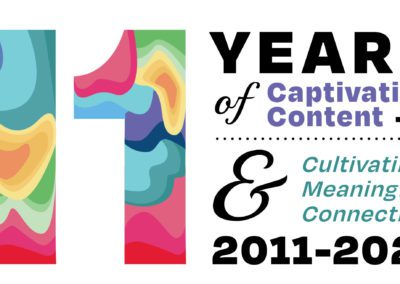$100 million. This is the amount of money that Zappos CEO, Tony Hsieh, estimates his company has lost due to poor hiring decisions since it was founded in 1999. This number is from a single company. Now, consider every business in America. That’s billions of dollars lost to poor hiring decisions — money that could be saved by following these hiring factors.

Now, Zappos is a huge company with thousands of employees and an annual revenue of about $1 billion. But that number highlights a serious issue that affects just about every business in existence: the cost of a bad hire.
Chances are, your business will never have to deal with $100 million worth of bad hiring decisions, but that doesn’t mean hiring mistakes won’t cost you dearly.
The U.S. Department of Labor estimates that one bad hire can cost a business the equivalent of 30 percent of that person’s first-year earnings.
Many people consider that Department of Labor estimate conservative. In 2013, CareerBuilder ran a survey of U.S. businesses. They asked those surveyed how they had been affected by a bad hire. About 27 percent of respondents stated that a single bad hire cost them more than $50,000.
A Change In Thinking
The way companies hire is rapidly changing. More businesses are recognizing the costs associated with a bad hire. Upward of 46 percent of job recruiters believe the hiring process is transforming into more of a marketing process. It’s a transition you may have already noticed.

Think about it. Applicants are like your prospects, and job postings are ad copy. You want to convert the right prospect into a client. Similarly, you want to convert the right applicant into an employee.
When it comes to the “ad copy,” it’s up to us as businesses and hiring managers to produce copy that attracts applicants on a 3-point matching system. It’s a system we use at Newsletter Pro. Essentially, an applicant must demonstrate these attributes, or hiring factors:
- Can-do
- Will-do
- Team fit
The First Factor
The can-do requirement is the easiest of the three hiring factors to incorporate in a job posting. Every company that has ever created a job posting knows how to list off the skills required for any given position.

However, finding a person who fits the “can-do” description is more than simply checking off each applicable skill. It’s about knowing what those skills look like in practice and advertising for those aspects as well.
For example, at Newsletter Pro, when we are looking for a team member who excels in customer service, we advertise for someone who can think on their feet, loves interacting with people, and knows how to put others first. For our client coordinator position, we ask for someone who is tenacious, has a calming presence, can handle surprises, and is an effective communicator.
We may interview a candidate who only has a year or two of customer service experience, but if they possess the qualities we are looking for, they may genuinely have a knack for customer service. It may be their native genius. This is where the next of the three hiring factors comes into play.
The Second Factor
A will-do attitude can be the single driving force that separates a merely qualified applicant from an outstanding applicant. Having a will-do attitude is more than saying yes to everything. It’s about having an insatiable drive to learn, grow, innovate, and do the best by your clients and team.

It’s also represented in a candidate’s willingness to roll up their sleeves and do a job they may not want to do but need to do, either as an extension of their position or as a point of personal ambition.
Our CEO, Shaun Buck, has said time and time again that one of his favorite things to see on a team member’s desk is continuing education material. Whether it’s books, binders, or information regarding a webinar or conference, these are a clear sign of an individual’s drive.
“The same people who are constantly learning are the ones who bring game-changing ideas to the table,” Shaun says. “They’re the ones to watch.”
When we list a job online, we ask for applicants who never want to stop learning. We’ll pique their curiosity and look for evidence of that curiosity in applications, resumes, and cover letters.
The Third Factor
From the perspective of our hiring team, an applicant can have all the skills, knowledge, and drive to do amazing things. But if they aren’t a team fit, we may have to pass.

When it comes to our internal organization, we have teams of writers, editors, graphic designers, project coordinators, and customer service specialists. We also have a fulfillment team, billing staff, and management. They all fit together like an elaborate jigsaw puzzle. Nothing we do involves just one department. Everyone relies on someone else.
Naturally, the people who apply for different positions will have different personalities. Over the last few years, we’ve developed and refined a series of core values that influences our decision-making when it comes to hiring.
Along this same line, we’ve invested in our company culture. If a job candidate doesn’t seem to mesh well with our established values and culture, it may be a sign that they won’t mesh well within the organization.
Bringing The Hiring Factors Together
When a job seeker finds one of our postings, they may come across the following paragraph. This paragraph that tells the story of who we are as a company and serves as a reflection of our core values:
“Newsletter Pros work hard, but we play hard too! We’re a smart group that gives a damn about our work, and strives — always — for a friendly, fun, and productive work environment. Culture is huge here at Newsletter Pro. Whether we’re in our weekly huddle, at a volunteer event or team-building activity, or engaging in Nerf gun wars around the office, we’re always focusing on our core values.”

Many of our best applicants, and eventual hires, saw how dedicated we were to being that “friendly, fun, and productive work environment.” This was coupled with a willingness to be ourselves. And the best applicants took the initiative to raise the bar. When that happens, we know we made the right hiring choice and made a solid investment for the company.
Hiring the right people can be a painstaking process. It can be costly and time-consuming. But it’s nowhere near as costly and time-consuming as hiring the wrong people.
When you know exactly who you’re looking for — and you utilize the three hiring factors — it can change everything. The right hire is an investment in the future of your team and your company as a whole.






